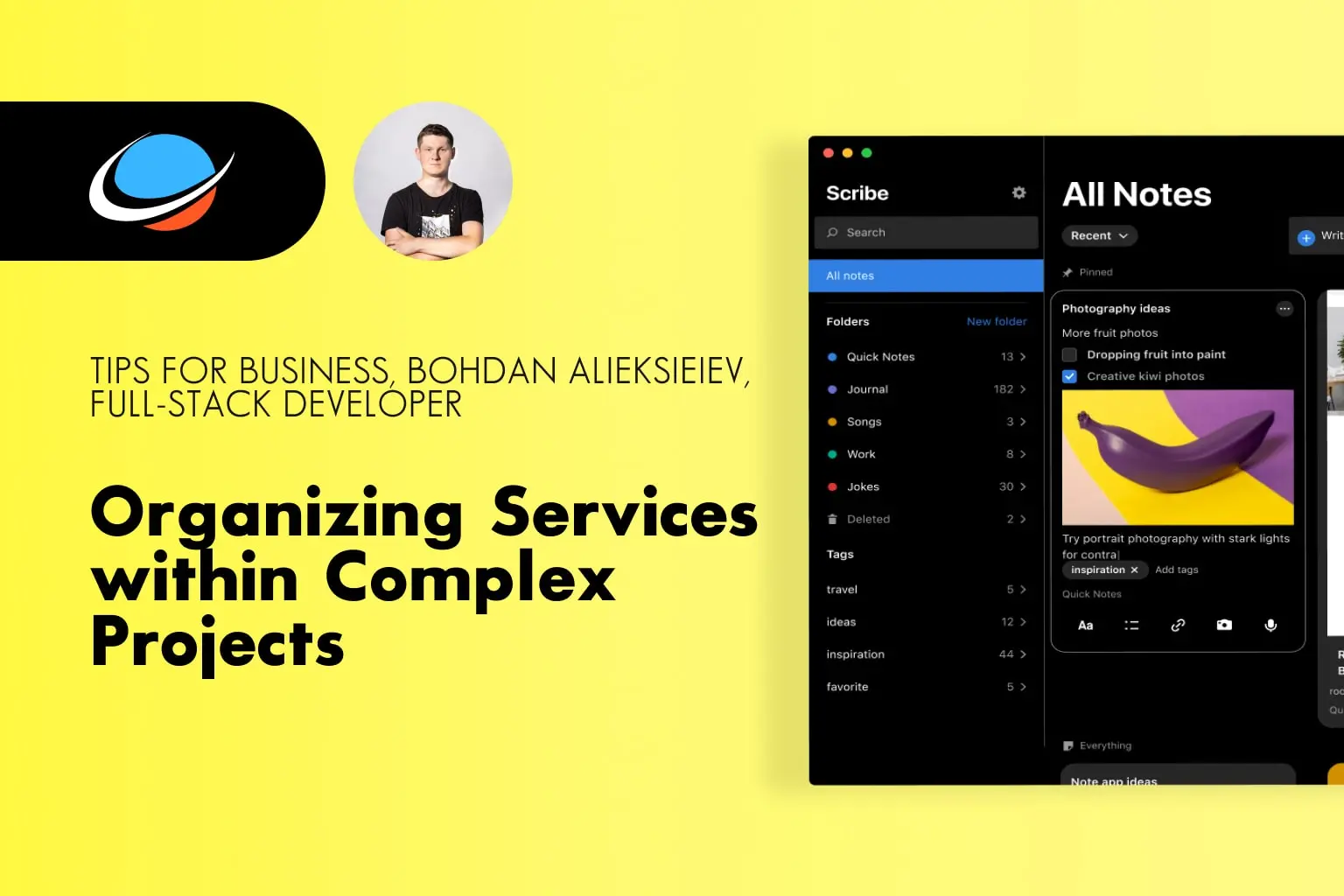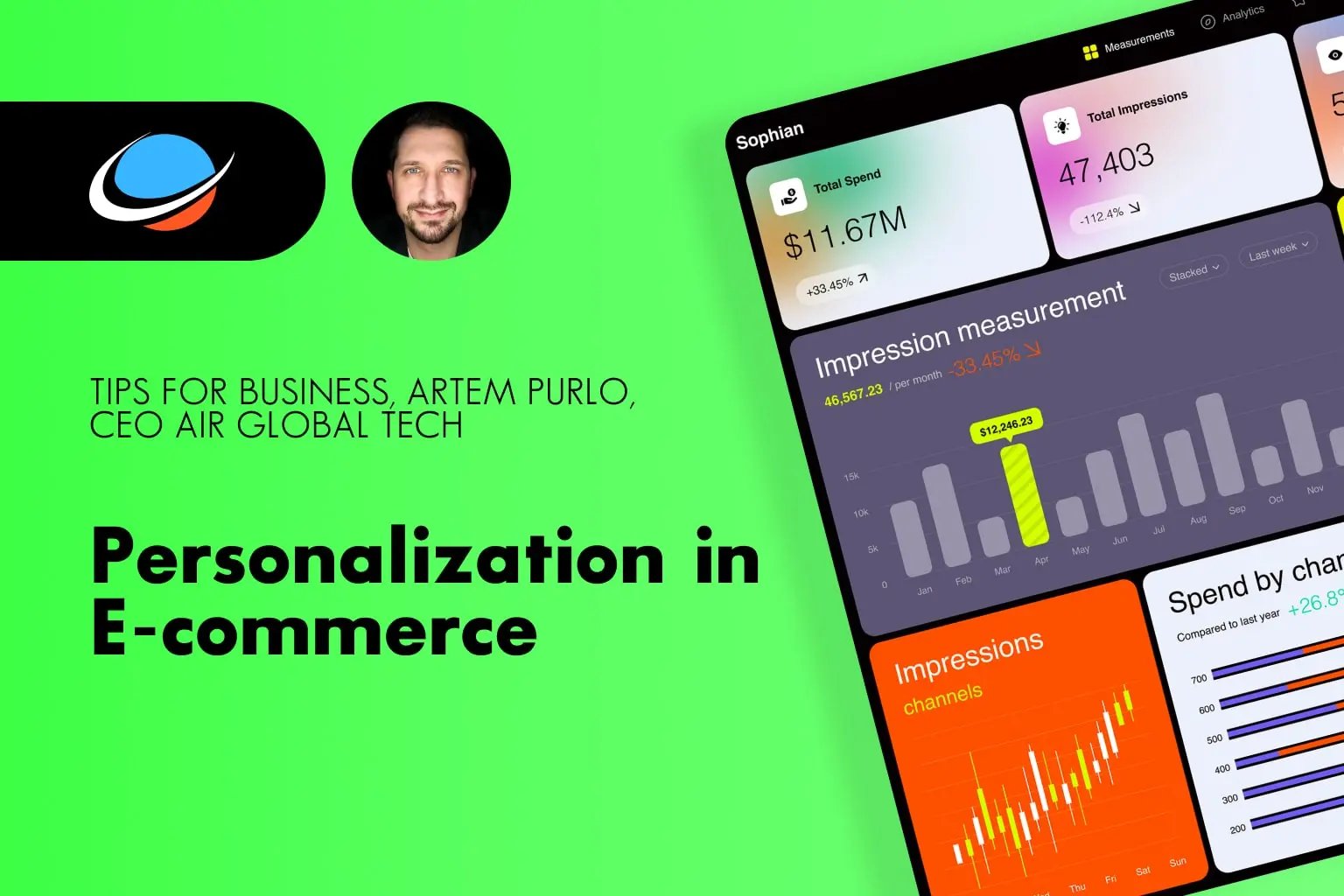In today's digitised world, where technology is rapidly changing the face of business, the efficient service organisation is becoming a key success factor. Today, we live in an era of transience: the latest innovations, ever-increasing competition and changing consumer needs. In this context, companies that are unable to adapt to market conditions are quickly dropping out of the game.
Let's take a look at a large-scale online food delivery service. Such a business has many challenges: from choosing the right suppliers to efficient logistics and customer interaction. A project of this complexity requires in-depth coordination of tasks, a systematic approach to data analysis, and, of course, innovative technical solutions.
But what if you encounter unforeseen challenges? For example, if the ordering system unexpectedly crashes during the peak lunch hour or when a new supplier fails to integrate with the existing platform?
To understand such challenges and find ways to overcome them, you need to delve into the intricacies of organising services within complex projects. This is what we will discuss in this article. We will explore the problems that can arise at different stages of project implementation, as well as consider innovative approaches and technologies that can help overcome them.
In today's fast-paced world, the effective organization of services within complex projects is crucial for businesses to thrive. This article delves into the intricacies of coordinating and synchronizing tasks within a project, using the example of a large-scale online food delivery service. We explore the technical challenges encountered during the implementation process and the innovative solutions employed to overcome them.
Synchronization and Precise Distribution of Tasks
In today's business environment, where competition is fierce and every minute can cost a company a lot of money, efficient synchronisation and distribution of tasks are key to success. And that's where innovative technology solutions come in.
Consider the case of an online food delivery service that manages an army of more than 200 couriers. Each courier has its own specifications - location, availability, type of vehicle, ability to carry a certain volume of orders, and so on. On this scale of business, the slightest mistake in coordination can lead to significant losses.
To solve this problem, it was decided to create a mobile application specifically for couriers. The application, built on the iOnic platform for Android devices, not only provided instant access to order information, but also allowed couriers to easily communicate with operators and other couriers.
The main feature of this app was its integration with the order management system. This meant that as soon as the customer placed an order, it instantly appeared in the courier's app, which was most optimally located to fulfil it. The history of previous orders helped to plan the optimal delivery route.
We should also not forget the importance of a user-friendly interface. Ease of use, menu clarity, loading speed - all these factors play a role when it comes to courier productivity.
In addition, integration with social media and other services, such as weather apps, allowed couriers to adapt to changing conditions and warn customers of possible delays.
In conclusion, the use of technologies such as mobile applications integrated with a company's core system can be the key to success in managing large teams of employees. Effective task synchronisation and distribution, backed by the right technology, can significantly increase productivity and reduce the risk of errors.
One of the primary challenges faced in managing a staff of 200+ couriers simultaneously is ensuring synchronization and precise task distribution. In the case of the online food delivery service, achieving seamless coordination between couriers was essential for efficient order fulfillment.
To address this, a mobile application was developed specifically for the couriers, enabling them to accept and process orders promptly. This application, designed for Android phones using the iOnic language, provided a user-friendly interface that stored the history of previous orders and facilitated the acceptance of new ones.
Integration with the CRM Accounting System
The integration of technology in modern business is becoming not only desirable, but also necessary to remain competitive in the market. One of the key technologies that allows you to optimise many business processes is a customer relationship management system, or CRM. In the case of an online food delivery service, integrating a CRM such as HubSpot with a courier application was particularly important.
When a customer placed an order via the website or mobile app, the information was automatically transferred to the CRM system. This not only simplified the order processing process, but also allowed us to automate many delivery-related processes. Each order in the CRM received a unique identification number and a "new order" status. All this information was then displayed in the courier application.
This automation is not only important for operational efficiency. It also provides a high level of transparency for couriers and managers. Couriers can track orders in real time, see their status, and receive instructions and notifications from the central system.
One of the biggest advantages of integrating CRM with the courier app was the automatic notification of couriers about new orders. Previously, couriers had to constantly check for new orders, but now they receive instant notifications directly to their mobile devices. This significantly increased the couriers' response time to orders and reduced waiting time for customers.
Integration with CRM also made it possible to manage the flow of orders more efficiently. Managers could assign orders to a specific courier based on their location, workload, and other parameters. It was also possible to automatically distribute orders between couriers based on optimisation algorithms.
However, the most important aspect of the integration was the increase in customer satisfaction. Through the automated process, orders were delivered faster, there was less chance of errors, and communication between couriers and customers was improved. This led to increased customer confidence in the service and increased loyalty.
Throughout this process, it is important to understand that integrating CRM with a courier application is not just a technical merger of two systems. It's a comprehensive strategy aimed at increasing efficiency, optimising resources, and improving customer experience. Only the right integration can ensure success in today's competitive online delivery world.
Integrating the courier application with the (HubSpot or similar) accounting system played a vital role in streamlining order management. When an order was placed through the company's website or client application, it would automatically be directed to the CRM system. Each order received the "new order" status and joined the pool of pending orders.
Simultaneously, couriers with the "ready to accept order" status were sent a notification through the application, prompting them to deliver the new orders within their designated areas. This integration ensured seamless communication between the couriers and the central order management system, enhancing efficiency and minimizing delays.
Tracking Courier's Location and Estimating Delivery Time
In today's world, consumers are attracted not just by a product or service, but also by its quality, speed and transparency. Whereas in the past, the lack of information about delivery status was the norm, in today's real-time era, customers expect and demand more.
Tracking the courier's location has become one of the key points for delivery services. There are several reasons for this decision. Firstly, it provides transparency and confidence for the customer. When you see your order coming, it reduces anxiety and increases trust in the service. Secondly, for the service itself, it is a way to optimise and control the work of couriers.
The use of GPS signals has become the standard for real-time location. The integration of modern technologies with the WHOIS server allowed not only to quickly receive data on the courier's movement, but also to present this information to the client on an interactive map. Thus, the customer could easily track the progress of their order by watching the movement of the tag on the map.
However, GPS signals were not always available. The modern urban landscape, large buildings, underground passages - all these factors can interfere with signal reception. In such cases, the system used triangulation methods. Using information from mobile base stations, it was possible to determine the approximate location of the courier, albeit with less accuracy.
However, knowing only the courier's location was not enough for the client. The question was also important: "When will my order be delivered?
In the era of real-time tracking and instant information, customers expect accurate updates on their delivery status. The online food delivery service tackled this expectation by implementing two key features: tracking the courier's current location and estimating the remaining delivery time.
To track the courier's location, the system utilized GPS signals. The data on the courier's current coordinates was transmitted through the WHOIS server and displayed as a geolocation mark on the user's site or application. In cases where GPS signals were unavailable, the system resorted to triangulation techniques using information from mobile communication base stations to approximate the courier's location.
Estimating the remaining delivery time involved analyzing the courier's average speed over a defined time interval. By calculating the average speed, the system could estimate the length of the remaining route and provide customers with an approximate delivery time. Factors such as traffic congestion, average speeds on specific streets or sections, and weather conditions were also taken into account, enhancing the accuracy of the estimated delivery time.
In today's digitised world, where technology is rapidly changing the face of business, the efficient service organisation is becoming a key success factor. Today, we live in an era of transience: the latest innovations, ever-increasing competition and changing consumer needs. In this context, companies that are unable to adapt to market conditions are quickly dropping out of the game.
Let's take a look at a large-scale online food delivery service. Such a business has many challenges: from choosing the right suppliers to efficient logistics and customer interaction. A project of this complexity requires in-depth coordination of tasks, a systematic approach to data analysis, and, of course, innovative technical solutions.
Ensuring Stable and Uninterrupted Service Operation
Chapter 5. Ensuring stable and uninterrupted service operation
In today's virtual world, ensuring the stability and uninterrupted operation of a service is one of the main tasks of any company. There are many factors that can lead to system failures or data loss. Therefore, to ensure quality service, it is necessary to develop strategies to prevent such unforeseen circumstances.
An online food delivery service, as a highly loaded platform, had a great responsibility to its users. To maintain stable operation and reduce the risk of system failures, it was decided to apply two key strategies: server backup and the use of a trusted security service.
Backup: The use of a backup system has become one of the main components of the company's security strategy. Setting up automatic backups every 24 hours ensured that in the event of a primary server failure, data would not be lost. This provided an additional level of protection and trust on the part of users. If necessary, the system could automatically switch to the backup server, minimising downtime and restoring the online platform without significant interruption.
Cloudflare security service: Given the potential cyber threats such as DDoS attacks, choosing a reliable security service was crucial. Cloudflare, as a global leader in cybersecurity, offered a number of powerful tools to protect against dangerous attacks. Integration with Cloudflare not only increased the service's protection against external threats, but also optimised its performance, ensuring fast web page loading and spam protection.
These measures not only helped the food delivery service to withstand high loads and protect against potential threats, but also strengthened user confidence in the platform. When customers knew that their personal data and order information was safe, they were more likely to use the service regularly.
In addition, the development team constantly monitored the system, identifying and fixing possible problems before they could affect users. Regular security updates, as well as staff training in modern security methods, ensured that the platform always remained one step ahead of potential threats.
In sum, it was important for the success of the online food delivery service not only to offer fast and high-quality delivery, but also to ensure stable and uninterrupted operation of the platform. This was the only way to win the trust of customers and ensure their loyalty in the long run.
Maintaining a highly loaded service requires measures to mitigate the risks of system failures and protect against potential software attacks. In the case of the online food delivery service, two key strategies were implemented: server backup and utilizing a trusted security service.
To ensure uninterrupted operation, a backup system was configured on the server side. In the event of a system failure, the backup automatically resumed operations on the current server or switched to a backup server, utilizing the latest up-to-date copy of the entire project. Regular backups, created once every 24 hours, safeguarded against data loss and minimized downtime.
To counter potential software attacks such as DDoS, the Cloudflare service was recommended. Cloudflare is renowned globally for its robust security features, providing an additional layer of protection for the project. Implementing Cloudflare enhanced the overall security posture of the online food delivery service, safeguarding it against various cyber threats.
Conclusion
In the age of digitalisation and rapid technological development, business success is largely determined by flexibility, innovation and the ability to adapt to changing market needs. An online food delivery service is a great example of how a deep understanding and application of these principles can turn an ordinary business idea into a digital phenomenon.
Planning and strategic thinking are separate but inseparable elements of the successful implementation of any project. Each stage, from idea to implementation, requires careful analysis, expert approach and a clear vision of the future. Synchronisation of all parts of the system, integration of various technological solutions, and the ability to track all processes in real time - all this creates the basis for the reliability and efficiency of the service.
However, even the best planning and use of advanced technology can be useless without appropriate security measures. Our world is becoming increasingly connected, and with that comes not only the opportunity, but also the responsibility to protect user data and information. This ensures trust, without which no service can survive for long.
In today's digital age, where customer needs are constantly growing and changing, companies must be prepared to meet these challenges. Using cutting-edge technologies, strategic partnerships and innovative solutions, it is possible not only to respond to market needs, but also to get ahead of them, offering customers exceptional services and experiences.
In conclusion, I would like to emphasise that business success is not only about the ability to make money, but also about the ability to innovate, adapt to change and constantly improve. An online food delivery service is more than just a platform for ordering food, it is an example of how technology, innovation and dedication can come together to create something big and meaningful.
Organizing services within complex projects requires meticulous planning, technological expertise, and innovative solutions. The case study of the online food delivery service exemplifies how synchronization, integration, real-time tracking, and robust security measures can overcome challenges and ensure successful implementation. By leveraging advanced technologies and strategic partnerships, businesses can optimize their operations, deliver exceptional services, and satisfy the ever-evolving demands of customers in today's digital age.












